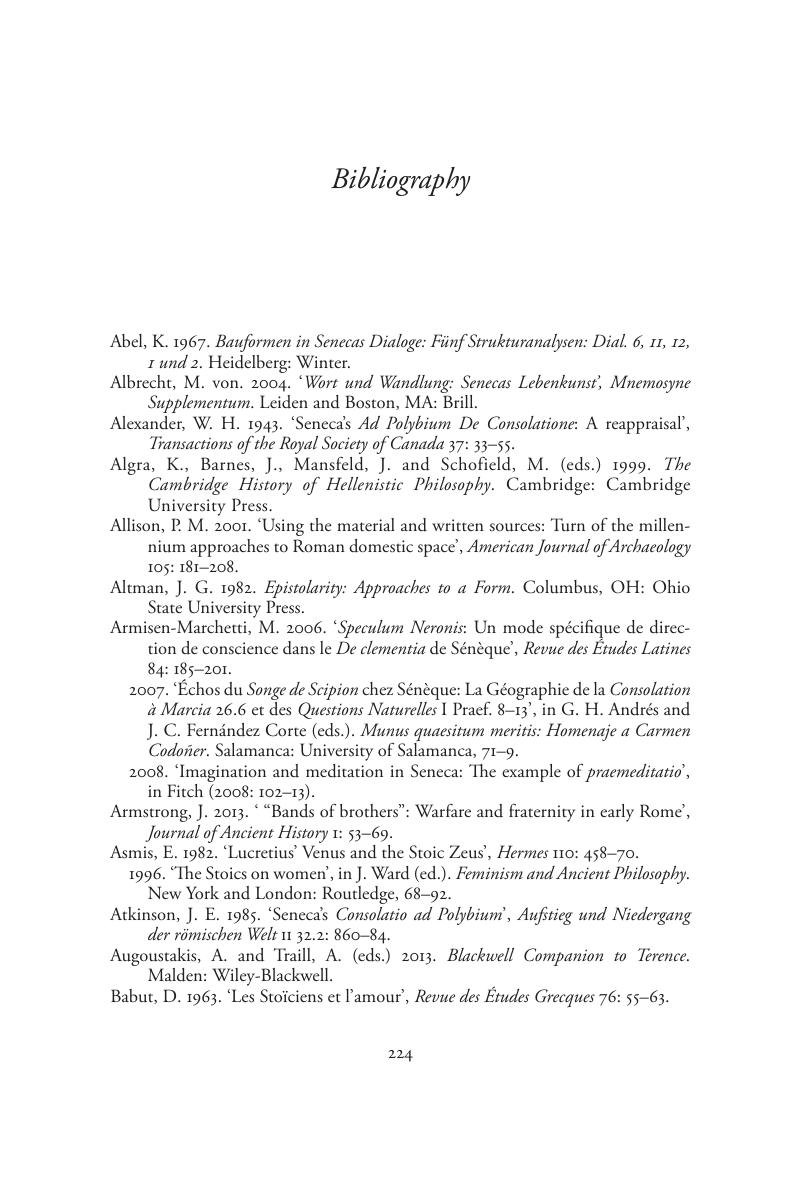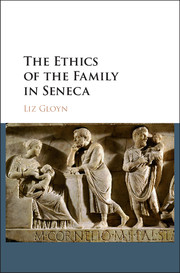Book contents
- The Ethics of the Family in Seneca
- The Ethics of the Family in Seneca
- Copyright page
- Dedication
- Contents
- Illustration
- Acknowledgements
- Introduction
- Chapter 1 Model Mothers
- Chapter 2 A Band of Brothers
- Chapter 3 The Mystery of Marriage
- Chapter 4 The Desirable Contest between Fathers and Sons
- Chapter 5 The Imperfect Imperial Family
- Chapter 6 Rewriting the Family
- Epilogue
- Appendix: The Text and Transmission of Seneca’s De Matrimonio
- Bibliography
- Index Locorum
- General Index
- References
Bibliography
Published online by Cambridge University Press: 25 May 2017
- The Ethics of the Family in Seneca
- The Ethics of the Family in Seneca
- Copyright page
- Dedication
- Contents
- Illustration
- Acknowledgements
- Introduction
- Chapter 1 Model Mothers
- Chapter 2 A Band of Brothers
- Chapter 3 The Mystery of Marriage
- Chapter 4 The Desirable Contest between Fathers and Sons
- Chapter 5 The Imperfect Imperial Family
- Chapter 6 Rewriting the Family
- Epilogue
- Appendix: The Text and Transmission of Seneca’s De Matrimonio
- Bibliography
- Index Locorum
- General Index
- References
Summary

- Type
- Chapter
- Information
- The Ethics of the Family in Seneca , pp. 224 - 240Publisher: Cambridge University PressPrint publication year: 2017



